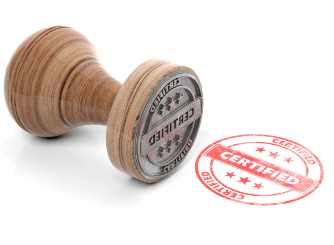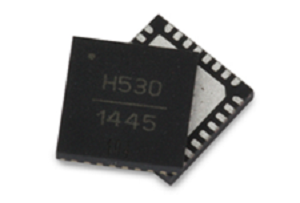What quality of on-board devices and components do you think are chosen for space missions? The answer is of course devices and components built to survive the most intense environmental factors presented in space.
To support our partners and industry colleagues, we’ve developed this blog to highlight the most important qualification standards and certifications for space applications as well as environmental factors to consider when selecting space grade materials. Additionally, we’ve included a complete listing of Criteria Labs qualification services and in-house capabilities for devices destined beyond our atmosphere.
 When it comes to devices such as Gain Blocks, GaN Power Amplifiers, Multi-chip Modules and Hybrids space organizations such as Boeing, NASA and ViaSat require specific qualification standards and certifications. With the rapid development of space technology over the years governing bodies have established specific certification standards for the design and development of devices and components for space applications. The standards that have been developed are comprehensive and cover all stages of development including; part selection, device manufacturing and device handling. It is important to note that decisions must sometimes be made in order balance cost and risk. Leveraging the below standards in order to make intelligent decisions when making tradeoffs is acceptable.
When it comes to devices such as Gain Blocks, GaN Power Amplifiers, Multi-chip Modules and Hybrids space organizations such as Boeing, NASA and ViaSat require specific qualification standards and certifications. With the rapid development of space technology over the years governing bodies have established specific certification standards for the design and development of devices and components for space applications. The standards that have been developed are comprehensive and cover all stages of development including; part selection, device manufacturing and device handling. It is important to note that decisions must sometimes be made in order balance cost and risk. Leveraging the below standards in order to make intelligent decisions when making tradeoffs is acceptable.
NASA specification EEE-INST-002 details the standards required for choosing, screening and qualifying devices for space applications. NASA outlines three different levels of screening:
The MIL-STD-883 standard establishes uniform methods, controls, and procedures for testing microelectronic devices suitable for use within Military and Aerospace electronic systems including basic environmental tests to determine resistance to deleterious effects of natural elements and conditions surrounding military and space operations. This standard is applicable microelectronic devices including; multi-chip, monolithic, hybrids, arrays, and the components from which the arrays and circuits are developed.
The MIL-PRF-38534 specification establishes the general performance requirements for hybrid microcircuits, multi-chip modules (MCM) and, similar devices and the verification and validation requirements for ensuring that these devices meet the applicable performance requirements for high-reliability space applications.
This certification contains five different levels:
MIL-PRF-38535 is a United States military specification that establishes the general performance and verification requirements of single die integrated circuit device type electronics. It is a performance-based specification document defining the general requirements, as well as the quality assurance and reliability requirements, for the manufacture of microelectronic or integrated circuits used in military and high-reliability space applications. This certification standard is designed to give manufacturers the flexibility to conduct a modern approach to high-reliability device qualifications while still maintaining the required quality and reliability standards.
The MIL-STD-750/5 standard establishes uniform test methods for the basic high reliability space application testing of semiconductor devices to determine resistance to deleterious effects of natural elements and conditions surrounding military operations. The qualification standard requires uniform testing, controls and processes to determine the operating limitations of devices in space environments.
MIL-STD-202 establishes uniform methods for testing electronic and electrical component parts, including basic environmental tests to determine resistance to deleterious effects of natural elements and conditions surrounding military operations, and physical and electrical tests. This standard is intended to apply only to small component parts, weighing up to 300 pounds or having a root mean square test voltage up to 50,000 volts unless otherwise specifically invoked.
AS9100d is a standard that includes the requirements for developing and maintaining a comprehensive quality management system for space and defense industries. The AS9100 differs from other quality certification standards in that is focuses on how devices are developed, and not on the end device itself.
In recent years there has been a significant increase in leveraging automotive and commercial parts for space applications. Upscreening components, which can be best described as testing and qualifying parts beyond OEM specifications is quite common. Organizations are now opting for a mix of military, space and automotive grade certification standards to achieve lower development costs and access a larger selection of parts.
Not sure which qualification standards are required or recommended for your space application? Contact our Sales Engineering Team today
 Components selected for high-reliability space applications must be able to survive a multitude of factors. Challenging environmental factors that devices will encounter in space includes; radiation, flight vehicle conditions (shock and vibration), contaminates, thermal differentials, atmospheric pressure and plasma fields.
Components selected for high-reliability space applications must be able to survive a multitude of factors. Challenging environmental factors that devices will encounter in space includes; radiation, flight vehicle conditions (shock and vibration), contaminates, thermal differentials, atmospheric pressure and plasma fields.
Semiconductor components must be able to survive exposure to radiation in space. Radiation in space environments is produced from solar emissions, radiation belts and cosmic radiation. Radiation has the potential to remove and/or damage critical components such as device circuitry. To combat this environmental challenge the industry has developed a radiation hardening process to resist damage and malfunctions caused by intense levels of ionizing radiation. It is recommended to develop and qualify radiation-hardened devices (RADHARD) to one or more of the following effects tests:
When engineering and manufacturing devices for space applications, manufacturers must keep in mind the intense shock and vibration factors that their devices will be subjected to. Thorough shock and vibration testing is encouraged to help determine how and why devices fail, however, a quicker and more cost-friendly option is device modeling and simulation.
Devices can be contaminated from dust particles, water vapor and other contaminates. To combat this factor manufactures have developed hermetic packaging, or an air tight seal. A common process used to measure the hermeticity of a package is the rate at which helium escapes from an assembly that has been pressurized with helium.
Device thermal differentials is caused by the uneven heating and cooling of the space vehicle. The heating of the space vehicle is caused by the sun’s radiation, resulting in one side of the structure becoming much warmer than the unexposed side. Device components with a high thermal expansion coefficient may expand unevenly causing large thermal stresses and device failures. Manufacturers are encouraged to select components with minimal expansion coefficients.
Devices and components tend to react differently in varying pressure scenarios. In near zero atmospheric pressure environments outgassing sublimation can produce whiskers and deposit formations, resulting in sensor disruptions and short circuits. To avoid these manufacturers are encouraged to select materials and components with lower vapor pressures.
The relationship between solar winds and Earth’s magnetic field can produce energized plasma environments. Plasma fields could charge the exterior surfaces of space vehicles and other mission critical devices such as exposed sensors. Surface charging can potentially surpass breakdown voltages, produce electro-static discharges and even disrupt electronic components. By selecting conductive materials, exposed devices can act as ground planes, resulting in a reduction in the undesirable charging effects.
 Criteria Labs has extensive qualification capabilities to address a broad range of customer requirements such as; providing overflow test chambers to complement internal resources, aiding in the development of new space device qualification processes and even customized qualification solutions for unique devices. Criteria Labs has the capability to perform device qualifications with strict adherence to applicable certification standards.
Criteria Labs has extensive qualification capabilities to address a broad range of customer requirements such as; providing overflow test chambers to complement internal resources, aiding in the development of new space device qualification processes and even customized qualification solutions for unique devices. Criteria Labs has the capability to perform device qualifications with strict adherence to applicable certification standards.